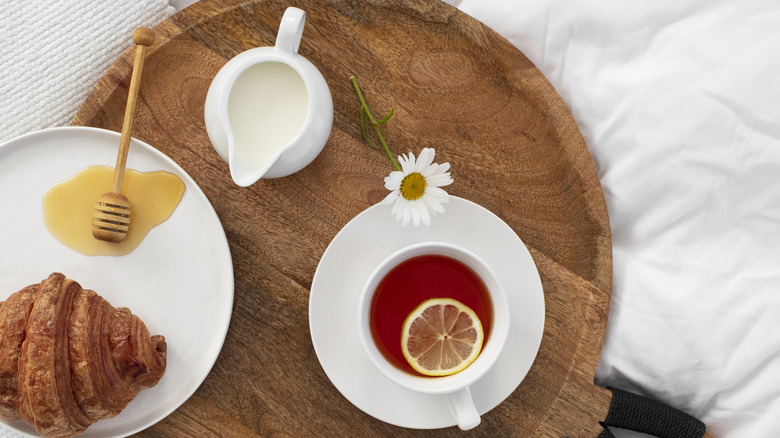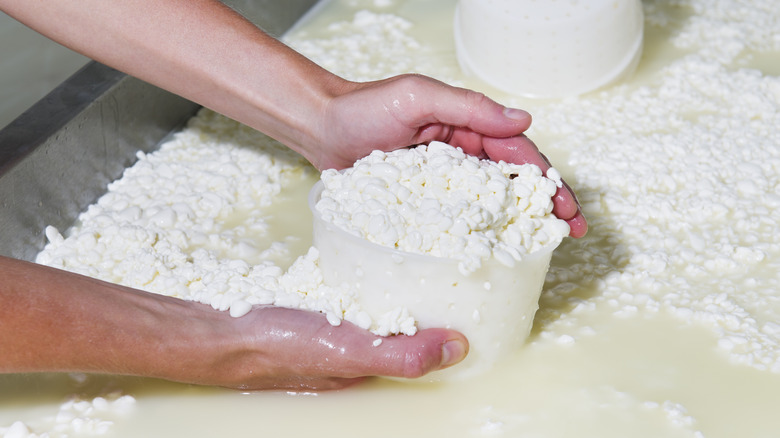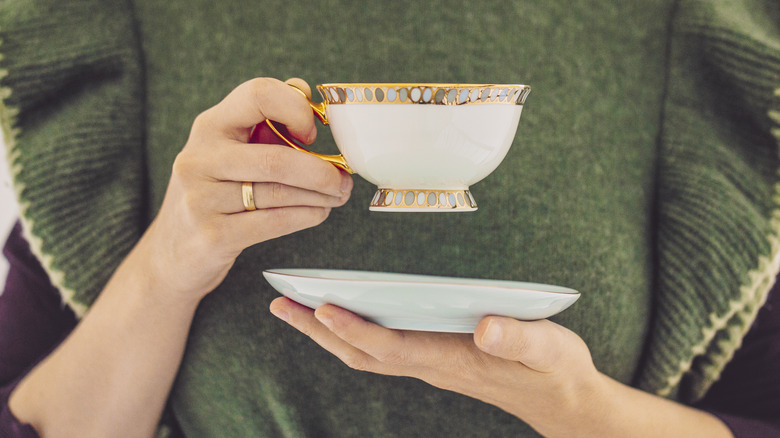The Science Behind Why Milk And Cream Curdle In Tea
A warm cup of tea is a perfectly relaxing way to start your day — that is, unless you add your milk or creamer to the cup and immediately notice a funky, chunky texture that was once smooth liquid. This is a process known as curdling, and it happens when dairy comes into contact with something too hot or too acidic. In this case, the tea's temperature is likely the culprit for causing the milk to curdle. Dairy has protein molecules, and these molecules naturally "repel" each other when the dairy is in its regular form. But when too much acid or heat hits them, the protein molecules stop that repulsion process, which causes them to clump together instead and ultimately create that unpleasant appearance of lumpy milk.
Curdled milk can definitely put a damper on your dish or drink, but if it isn't spoiled, then it's perfectly safe to consume — like in curdled cream sauce. However, it's imperative to know the difference between milk that has curdled due to spoilage or curdled due to contact with a substance it doesn't like; milk that's spoiled can make you sick.
Milk can curdle intentionally or unintentionally
There are two different scientific processes behind why milk curdles, known as intentional or unintentional curdling. For some dairy products, curdling is necessary. If you're wondering why cottage cheese is so lumpy, you can thank the curdling process. This is known as intentional curdling, and it's done using milk that is within its expiration limit. The intentional change means the milk hasn't gone bad, making it safe to eat.
As for unintentional curdling, this is where things can get dangerous. As milk ages, its pH drops lower and lower, turning it more acidic over time (it's the reason we refer to sewage-smelling expired milk as "sour"). Once that pH gets too low, the milk curdles, but this time, it's because the milk is no longer safe to consume. This is known as unintentional curdling. If you pour sour milk into your hot tea, it will immediately curdle if it hasn't already, and in this case, you definitely shouldn't drink it, as it could potentially make you sick.
How to avoid curdled milk in your tea
If you aren't interested in curdled milk in tea, there are a few ways to curb the curdling. Heat is the biggest problem here, so avoid a temperature that's too high, such as boiling. Keep the tea comfortably warm but not too hot.
Another major problem could be the type of milk you're using. Dairy products with higher fat content are less likely to curdle, so if you're using skim milk in your tea, it will curdle more easily than whole milk. Fat molecules help prevent the dairy from breaking down, so if you like cream as much as you like milk (and aren't so worried about the higher fat content), it might be better to add cream to your tea.
Heating milk too quickly can also play a role in the curdling process. If you're heating water, then pouring in ice cold milk, you're asking for trouble. Try heating the milk and water slowly together, or heat the milk on its own, then slowly add in the water.


